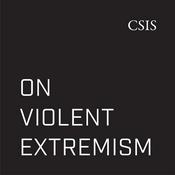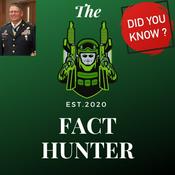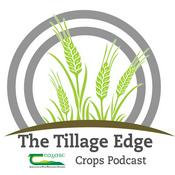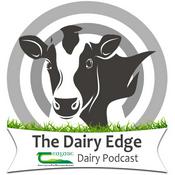323 episodes

Bluetongue Explained: What Beef Farmers Need to Know
18/12/2025 | 25 mins.
For a special joint podcast on bluetongue, with Stuart Childs from the Dairy Edge and Ciaran Lynch from Ovicast, this week’s Beef Edge is joined by vet John Donlon to find out more about bluetongue. Primarily transmitted via biting midges, the cases on farms in Northern Ireland significantly reinforces the need for increased awareness in the Republic of Ireland. Early action, identification and isolation will be key in reducing the potential for further virus spread. Temperature is a major factor in the transmission of bluetongue. The typical transmission period usually runs from late spring to early autumn, especially during the summer months. During the winter, the risk of disease spread is much lower. Bluetongue is associated with many symptoms. Typically, in affected cattle and sheep, the main symptoms may include: fever and loss of appetite; drop in milk yield (dairy cows); reddening of mucous membranes; sores on the nose, gums or dental pads; swelling of the face, lips or tongue (‘blue tongue’); breathing difficulties, drooling or nasal/eye discharge; lameness due to inflammation at the top of the hoof; abortion or foetal deformities; and, in severe cases, infection can result in death. For further info: Teagasc urges vigilance on bluetongue - Teagasc | Agriculture and Food Development Authority Bluetongue is a notifiable disease, meaning anyone who suspects an animal may have the disease is legally obliged to notify DAFM without delay. To report a suspected case of Bluetongue virus to the Department of Agriculture, Food and the Marine (DAFM), you should immediately contact your local Regional Veterinary Office (RVO) or the National Disease Emergency Hotline. Contact Details:· During office hours (9 am - 5 pm): Contact your local Regional Veterinary Office (RVO)· Outside office hours (operational 365 days a year): Ring the National Disease Emergency Hotline at 01 492 8026 For more episodes from the Beef Edge podcast, visit the show page at:https://www.teagasc.ie/thebeefedge Produced on behalf of Teagasc by LastCastMedia.com

The latest research findings from the Derrypatrick herd
11/12/2025 | 23 mins.
Dr. Paul Crosson, Beef Enterprise Leader, Teagasc Grange, is on this week’s Beef Edge to discuss the latest research being carried out in 2025 and the plans for 2026. Pauls highlights the current research underway on the Derrypatrick and Maternal Herd and he outlines the findings from the dairy beef work being carried out as well as the latest research relating to additives. You can also watch the recent Teagasc Beef Webinar with Paul at: https://www.youtube.com/watch?v=ntJD2zfLVmM For more episodes from the Beef Edge podcast, visit the show page at:https://www.teagasc.ie/thebeefedge Produced on behalf of Teagasc by LastCastMedia.com

Understanding the New Vet Med Regulations
03/12/2025 | 16 mins.
Rebecca Fitzpatrick, Superintending Veterinary Inspector with the Department of Agriculture, outlines the changes affecting beef and sheep farms this year on this week’s joint Beef Edge and OviCast podcast. From 1st December, new rules on veterinary medicines came into effect as part of Ireland’s national strategy to tackle antimicrobial and anti-parasitic resistance. These changes mean that a range of commonly used products will now require a veterinary prescription, and all prescriptions will be issued and recorded through the National Veterinary Prescription System, or NVPS. To help explain what this means day-to-day on your farm, Rebecca looks back at the background to AMR and APR, and she discusses why moving certain products to prescription-only status is necessary. Rebecca explains that all prescriptions must go through NVPS, the national online system. While farmers can still choose where to buy, retailers just need the valid NVPS prescription. She says it is important to start planning earlier with your vet, especially during busy dosing seasons.For more information: https://www.gov.ie/en/department-of-agriculture-food-and-the-marine/services/national-veterinary-prescription-system/ For more episodes from the Beef Edge podcast, visit the show page at:https://www.teagasc.ie/thebeefedge Produced on behalf of Teagasc by LastCastMedia.com

Boosting Beef Performance with Oats
26/11/2025 | 11 mins.
Ronan Lynch, agronomist with Deeside Agri, and suckler and beef finisher, Brian Kirk from Co. Louth, are on this week’s Beef Edge to discuss the opportunity of using native grains in rations. Ronan explains that of the 7 million tonnes of grains used in the country, only 2 million are produced in Ireland. He highlights the benefits of oats and reducing the carbon footprint by incorporating homegrown grain ore in rations such as oats. We often hear that barley is the premium grain, and oats are just a second-best option for livestock. However, Teagasc trials showed that when feeding finishing beef cattle on a grass silage-based diet, rolled oats performed just as effectively as rolled barley. Brian then details his suckling and finishing system and discusses how performance on his farm has improved by using oats in the rations. Further details at:https://teagasc.ie/publications/oats-a-high-performing-native-grain/ For more episodes from the Beef Edge podcast, visit the show page at:https://www.teagasc.ie/thebeefedge Produced on behalf of Teagasc by LastCastMedia.com Image: FarmersJournal.ie

The Challenge of High Beef Prices
20/11/2025 | 10 mins.
Rupert Claxton, Meat & Livestock Director, GIRA, is on this week’s Beef Edge podcast discussing the global outlook for the beef industry. Rupert highlights that the supply of beef is tight, while demand from the consumer is remarkably robust. The result of good global demand and tight supply are the high prices seen today. Rupert explains how several UK retailers have included beef from a variety of non-European sources on their retail shelves during 2025, however, outlook for 2026 is a continuation of the current trend, both in Europe and globally. He says that Ireland is well placed to produce more beef in a way that is both environmentally and commercially sustainable and he emphasises there are opportunities for investment in the beef sector but rationalisation at industry and farm level is needed to deliver efficiencies. For more visit:https://teagasc.ie/publications/national-beef-conference-2025/ For more episodes from the Beef Edge podcast, visit the show page at:https://www.teagasc.ie/thebeefedge Produced on behalf of Teagasc by LastCastMedia.com
More Government podcasts
Trending Government podcasts
About The Beef Edge
Listen to The Beef Edge, Parliament - Live Stream and Question Time and many other podcasts from around the world with the radio.net app

Get the free radio.net app
- Stations and podcasts to bookmark
- Stream via Wi-Fi or Bluetooth
- Supports Carplay & Android Auto
- Many other app features
Get the free radio.net app
- Stations and podcasts to bookmark
- Stream via Wi-Fi or Bluetooth
- Supports Carplay & Android Auto
- Many other app features


The Beef Edge
download the app,
start listening.

























